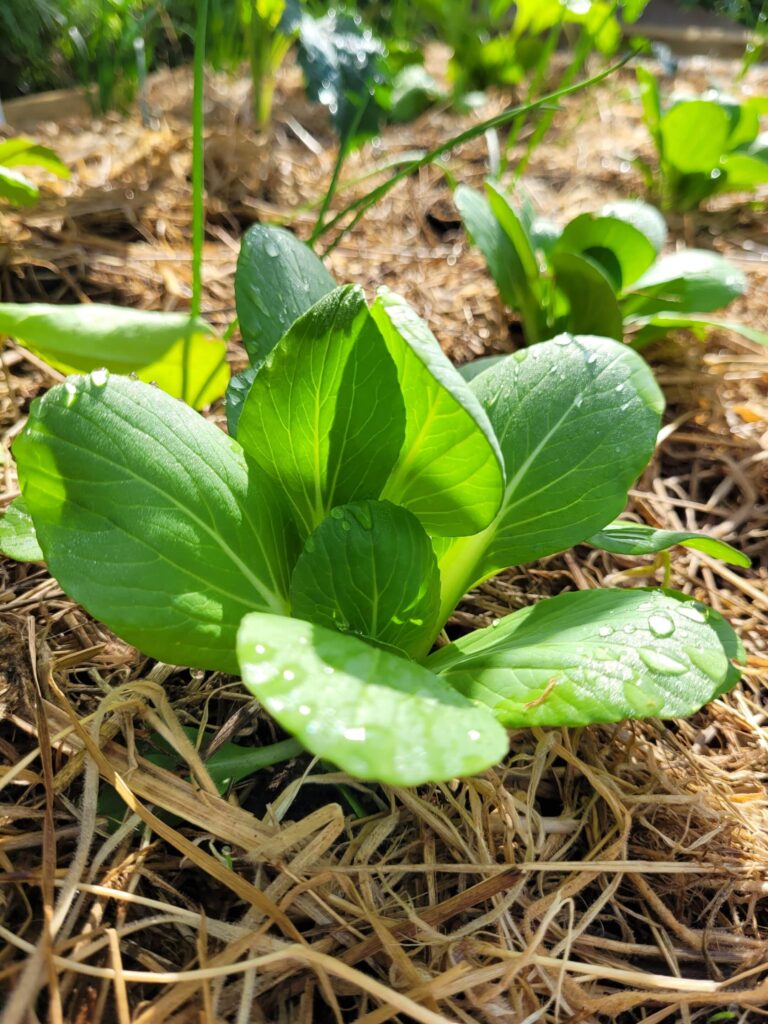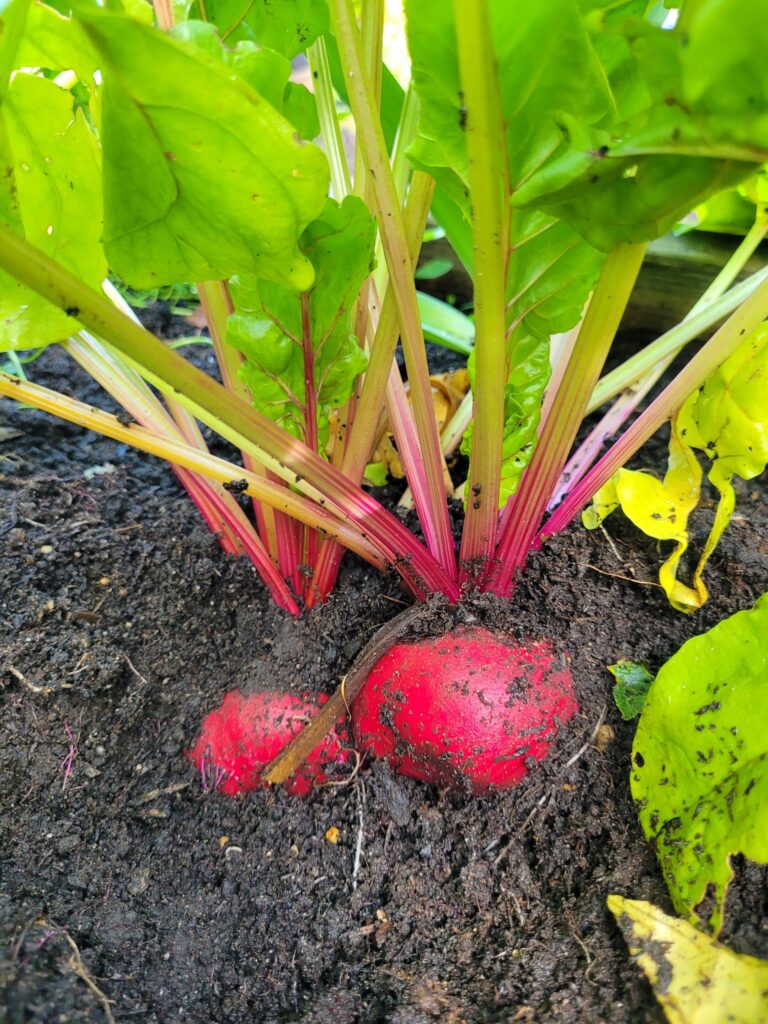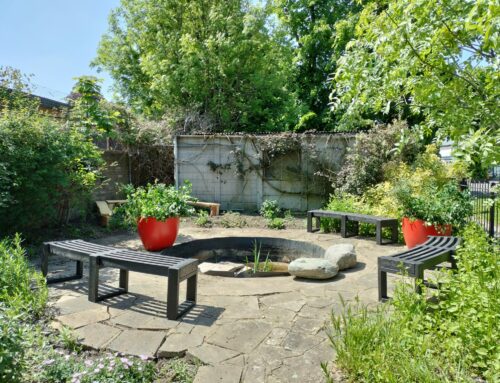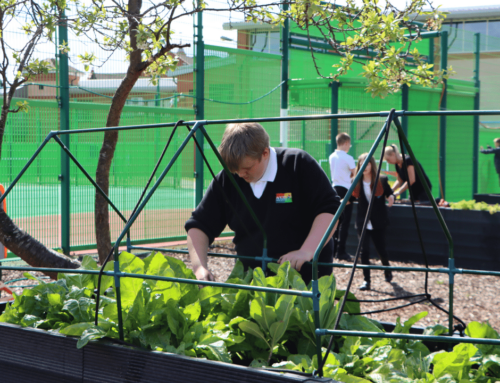It’s that time of year where the very knowledgeable Martyna drops by with a few gems of gardening wisdom. She knows her onions (and kale, calabrese and sprouts), so don’t miss her top tips for making your garden as healthy, productive and diverse as possible.
“For all gardeners, November is prime time to get the last of those autumn tasks done and cosy up by the fire with a decent gardening book. As the trees lose the last of their leaves, Autumn is the time to clear and prepare for the next season. While it’s easy to assume there will be time for such tasks in Spring, it’s probably safe to say that by the time March comes around, we’ll have no time for mending things and would be rather sowing our precious seeds.
Autumn task #1 – pep up your soil
“If I had to pick a single most important Autumn task it would be to nourish the soil in which we grow our fruit and veg. The nutrients taken by the plants during the growing season need to be returned to the soil in winter in the form of compost, animal manure or even green manure. If you’re new to the concept of live soil, I strongly urge you to explore this topic during the winter months. Many growers understand that nutrients are important for plant growth, but often the soil may be rich in minerals and yet contain hardly any biological life. Worms, micro-arthropods, bacteria and fungi are the core lifeforms in soil and their presence indicates a healthy ecosystem and resilient plant life. The invisible symbiotic relationship between the plants and the bacteria is what feeds the soil, which in turn reduces the dependency on mineral fertilisers that (of course) come in plastic bottles.

“With recent changes in climate and scorching heatwaves, it’s worth thinking about improving raised beds and borders, to hold more moisture and help plants resist drought. Naturally, wood and woodchip act like a sponge, so burying a few old wooden logs, branches or semi-decomposed woodchip in your raised beds is a great way to store more water. A method known as Hugelkultur has been used by those following permaculture principles for decades now. Hugel-beds are usually built in a form which imitates a steep mound, with larger logs at the bottom, thinner branches and twigs in the middle layer, manure and soil at the top and sides. However, those of us who use raised beds can easily replicate this method by filling the bottom third of the bed with dead wood and continuing with soil above, making no visible difference to the eye. The wood will slowly decompose and add precious source of carbon to the soil, attracting beetles and centipedes, both of which are crucial elements of a healthy ecosystem. At the same time, creating a thick layer of mulch on top of soil, will prevent unnecessary water evaporation. Autumn is the time of falling leaves, so whether you decide to add them on top of your beds or gather in a pile to slowly break down for next season, now is the time to take advantage of this free resource. Both woodchip and leaves are an attractive source of food for fungi, so by adding it to your beds you’re also strengthening the soil’s resistance to pathogenic diseases, such as powdery mildew. Imagine you’re a worm living in a raised bed, you’d be a lot happier if the roof of your house had nice new insulation, instead of becoming one very hard, frozen icicle.
Autumn task #2 – Winter planting

“There is still time to plant winter vegetables, mostly hardy salads such as Winter Imperial, Asian salad leaves, kale, Japanese onions or garlic. For those who aren’t lucky enough to own a greenhouse, but would like to extend the growing season, adding a few hoops and a gardening fleece on top of raised beds is a great way to protect the veggies from extreme frosts, chilling winds or heavy downpours. Such structures will be useful in early spring, giving a head start to small seedlings or even early crops of lettuce or radish both of which are perfectly fine with occasional frosts.

Autumn task #3 – horticultural hot water bottles
“For extra warmth, a pint size milk bottle painted black, filled with water and placed between the plants will attract the heat from the sun and store to radiate gently at night. Those seemingly futile methods are proven to be working even in the gardens of the arctic circle, where gardeners face deep snow and extremely low temperatures with minimal daytime light hours. For us it may make no difference, but for a fragile plant it certainly does.
Autumn Task #4 – inspect and clean bird boxes
“There’s no better time than crisp autumn days to be clearing and mending our spaces. It’s worth having a look in the gutters and removing all the dead leaves, moss and tree debris that may have gathered above our eyeline. Taking down bird nesting boxes, inspecting and clearing them will give us an idea whether our space is properly supporting wildlife. Clean and mended boxes can be stored in a shed or a garage and then placed on a tree again in early spring ready for the new inhabitants. Here’s some top tips from the RSPB on how to maintain nest boxes.
Autumn Task #5 – tidy up!

“Levelling paths and clearing walkways in autumn will make our life easier, stepping on freshly laid woodchip is definitely better than sliding on a muddy death trap. Keeping all garden areas free from debris, pots and tools will make it look neat and attractive, at the same time removing any hiding places for snails and slugs, which with no doubt will creep out as soon as the sun shines a little stronger and the smell of freshly planted lettuce is in the air.
“Autumn is the time of reflection, planning and re-organising. It’s a time of calm when we can watch our gardens change, without the constant feeling of another task needing to be done like it tends to be in spring. It’s a time to synchronise with Mother Earth and slow down, enjoy falling leaves and the first glittery shine on frosty blades of grass”.














Leave A Comment
You must be logged in to post a comment.